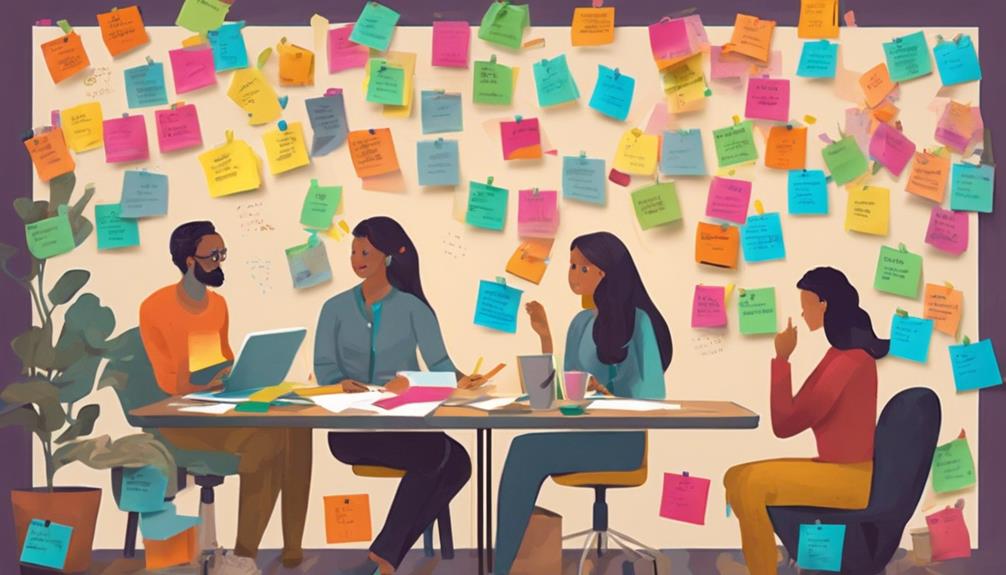Picture a scenario where one weed, initially appearing harmless, slyly intertwines its roots with the colorful flowers in a garden, gradually overshadowing their beauty.
Unintentional gaslighting operates in a similar manner, subtly infiltrating interactions and distorting perceptions.
As we navigate the intricate dance of human connection, it becomes imperative to unravel the layers of this phenomenon that often lurk beneath the surface.
Stay with us as we uncover the complexities of unintentional gaslighting, shedding light on its nuances and implications for our relationships.
Key Takeaways
- Unintentional gaslighting harms relationships by distorting reality and triggering self-blame.
- Gaslighters may not realize their manipulation but must hold themselves accountable.
- Recognizing and addressing gaslighting behavior is crucial for building honesty and connection.
- Practicing empathy, listening deeply, and accepting different realities can help prevent unintentional gaslighting.
Understanding Unintentional Gaslighting
In exploring the intricacies of unintentional gaslighting, we uncover the subtle yet impactful ways in which distorted perceptions can affect relationships and emotional well-being.
It's crucial to understand that unintentional gaslighting can occur without malicious intent, often stemming from a lack of awareness or empathy. We may unknowingly invalidate someone's feelings or experiences, causing them to doubt their reality.
By being overly positive in a dismissive manner or telling white lies, we can inadvertently manipulate others' perceptions. Recognizing these behaviors is the first step towards fostering healthier relationships.
Through introspection and active listening, we can navigate these complexities with compassion and understanding, fostering trust and emotional security in our interactions.
Effects and Consequences

Considering the impact of unintentional gaslighting, individuals may find themselves grappling with a range of emotional turmoil and relational challenges. It's important to acknowledge the effects and consequences that can arise from such situations.
- Emotional Turmoil: Victims may experience self-blame, trust issues, and resentment.
- Relational Challenges: Gaslighting can lead to relationship breakdowns, leaving individuals feeling disrespected, ashamed, or confused.
- Psychological Impact: Withdrawal from gaslighting relationships can exacerbate anxiety, depression, and substance use.
- Long-Term Effects: The lasting consequences of unintentional gaslighting can be profound, impacting mental health and overall well-being.
Examples of Gaslighting Behavior
Examples of gaslighting behavior can manifest in subtle yet impactful ways within interpersonal interactions, undermining the feelings and experiences of others. Invalidating someone's emotions or experiences is a common form of gaslighting, making the individual doubt their own reality.
Being overly positive in a dismissive manner can downplay legitimate concerns, dismissing them as unwarranted. Telling white lies that have harmful consequences can manipulate perceptions and distort reality, causing confusion and mistrust.
Believing in all-or-nothing extremes and using judgmental language can distort the truth and invalidate differing perspectives. Additionally, accusing someone of being too emotional in a demeaning manner can diminish the validity of their feelings, leading to self-doubt and internal conflict.
Recognizing these behaviors is essential in preventing unintentional gaslighting.
Strategies to Stop Gaslighting

Understanding how to stop unintentional gaslighting is crucial for fostering healthy and respectful relationships. Here are some strategies to help us prevent unintentional gaslighting:
- Recognize the behavior: Acknowledge when gaslighting tendencies arise and take responsibility.
- Improve responses: Reflect on reasons for gaslighting and work on healthier communication patterns.
- Pause and reflect: Before reacting, take a moment to control emotions and understand underlying feelings.
- Seek self-awareness: Uncover personal truths that may contribute to gaslighting tendencies and address them proactively.
Addressing Gaslighting Behavior
Addressing gaslighting behavior requires sincere introspection and a willingness to confront our own actions and their impact on others. It's essential to approach this process with empathy and a genuine desire to change harmful behaviors. By acknowledging our role in unintentional gaslighting, we can begin the journey towards healthier relationships and improved communication.
| Steps to Address Gaslighting Behavior | Description |
|---|---|
| Reflect on past interactions | Consider situations where gaslighting behavior may have occurred |
| Apologize and take responsibility | Acknowledge the impact of your actions and express genuine remorse |
| Seek feedback and listen actively | Encourage open communication and truly listen to others' perspectives |
| Educate yourself on healthy dynamics | Learn about effective communication and boundaries in relationships |
| Practice self-awareness and mindfulness | Cultivate awareness of your emotions and reactions in interactions |
Unveiling Gaslighting Realities

In exploring the depths of gaslighting, we uncover intricate webs of manipulation and distortion that shape our perceptions and relationships.
- Gaslighting often starts subtly, making it challenging to detect initially.
- It thrives on undermining confidence and fostering self-doubt.
- Gaslighting can lead to questioning one's reality and feeling isolated in relationships.
- Understanding the complexities of gaslighting is crucial to breaking free from its harmful effects.
Gaslighting realities reveal the insidious nature of this form of emotional abuse, highlighting the importance of recognizing the signs and taking steps to address and prevent it in our interactions.
Frequently Asked Questions
Can Unintentional Gaslighting Occur in Professional Settings, Such as the Workplace or in Academic Environments?
Yes, unintentional gaslighting can occur in professional settings or academic environments. It's crucial to recognize its impact, foster understanding, and promote healthy interactions. We must strive for empathy and accountability to prevent harm.
How Can Individuals Differentiate Between Healthy Communication and Unintentional Gaslighting in Their Relationships?
In our relationships, recognizing healthy communication involves validating feelings, embracing differing viewpoints, and fostering trust. Differentiation from unintentional gaslighting requires empathy, accountability, and understanding of impact. It's about building connection, not control.
Are There Specific Patterns or Red Flags That Indicate Someone May Be Unintentionally Gaslighting Others?
When unintentionally gaslighting, subtle signs like dismissiveness, invalidation, or defensiveness can signal harm. Recognizing these patterns, holding oneself accountable, and practicing empathy are crucial steps to prevent unintentional manipulation in relationships.
What Role Does Self-Awareness Play in Recognizing and Addressing Unintentional Gaslighting Behavior?
Self-awareness is pivotal in recognizing and addressing unintentional gaslighting behavior. We must introspect, acknowledge our actions, and actively work on improving responses. It's about accountability, empathy, and fostering healthier relationships through mindful communication and understanding.
How Can Individuals Rebuild Trust and Repair Relationships After Unintentional Gaslighting Has Occurred?
We can rebuild trust and repair relationships after unintentional gaslighting by acknowledging our behavior, apologizing sincerely, and taking positive actions. Listening, showing empathy, and being open-minded are key to rebuilding connections and fostering understanding.
How Can Unintentional Gaslighting Contribute to the Traits of Narcissism?
Unintentional gaslighting can unknowingly reinforce the manipulative and controlling behavior of someone with narcissistic traits. The subtle invalidation of the victim’s feelings can contribute to the narcissist’s belief in their superiority. Through exploring evil traits of narcissists, we can better understand the damaging impact of unintentional gaslighting.
Conclusion
In our quest to uncover the hidden dangers of unintentional gaslighting, we must confront the uncomfortable truth that our actions, even with good intentions, can have harmful effects.
By recognizing the subtle signs and effects of gaslighting, we can strive for more authentic and empathetic interactions.
Let's embrace empathy, examine our behaviors, and empower ourselves to stop unintentional gaslighting in its tracks.
Together, we can create healthier and more respectful relationships.
Felicity, our Author, pens in-depth articles and guides that delve into the heart of personal discovery. Her narrative-driven approach weaves together theory, practice, and personal anecdotes, making the journey of self-exploration both relatable and inspiring. Felicity’s contributions help illuminate the path for those seeking a deeper understanding of themselves and their relationships.










